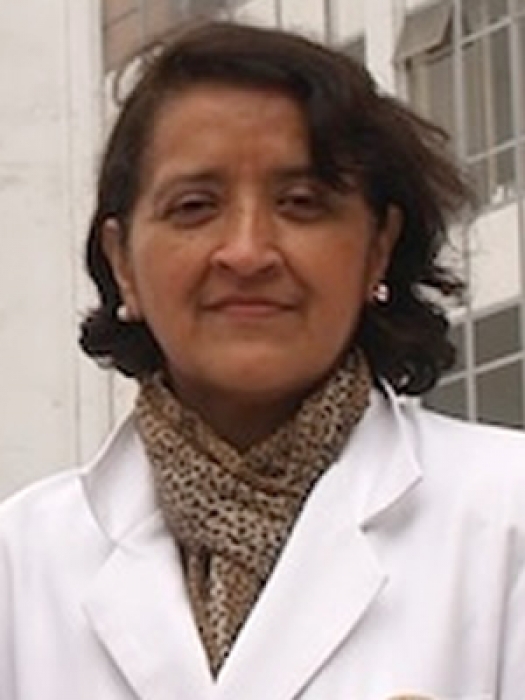Conference
- Location: Lima, Peru
- Date: November 7-11, 2007
- Attendee: Ferdinando Pisani
marthavillar.jpg

Martha Villa, MD
The World Summit for the Harmonization in Traditional, Alternative and Complementary Medicine (TACM) is the brain child of Dr. Martha Villar, the Foundation for Alternative and Integrative Medicine's (FAIM) principle collaborator in Peru. The event took place at the facilities of the Peruvian Medical Association (PMA). The purpose of the summit was to bring together health ministry officials with practitioners of traditional, alternative and complementary medicine to discuss a seemingly impossible subject: how do these diverse medical systems fit in a single legal framework. The conference concluded with a document titled the "Lima Declaration."
The conference was opened the first day with a speech by the dean of the PMA stating how important it is to integrate traditional, alternative and complementary medicine into modern health care. Then followed a video presentation by Dr. Xiaouri Zhang on the general overview of the actual TACM legal frameworks. Dr. Zhang who could not personally attend the summit, is director of the World Health Organization (WHO) office in Geneva. Although traditional medicine is used as first choice by at least 70 percent of humanity, WHO only disposes a few people to the task of trying to make order of this vast subject. Originally, Dr. Zhang's role was trying to give credence to traditional medicine so that it could integrate properly with Conventional Medicine. Her job was to set standards that would allow researchers to produce the necessary scientific evidence that allows this process to occur. Her personal agenda is to promote Chinese medicine and she does this with the zeal of somebody who knows that a rising superpower also needs to advance its own medical paradigm. The directorate of WHO added complementary and alternative medicine to her responsibilities.
Dr. Martha Villar followed with a presentation on the situation in Peru. The morning finished with two interesting presentations: (i) the use of phytotherapy in primary health care (by an Argentinean physician) and (ii) the new concepts of health and disease seen from a social perspective (by Julio Cesar Payan de la Roche, a Colombian physician who is also an intellectual). The afternoon included a number of presentations on existing laws in specific countries on the quality control of traditional, alternative and complementary medicine products and services. The specific countries represented were Spain, Canada, Mexico, China, France, Brazil, and Peru. There was a general overview on the situation in the Americas.
On the second day, the morning included presentations of different experiences in traditional, alternative and complementary medicine training and professional formation. Again, different countries were represented: Spain, Germany, Argentina, Italy, Cuba and Peru. In the afternoon there was a collection of PowerPoint presentations on scientific evidences of the effectiveness of traditional, alternative and complementary medicine.
The third day followed with morning presentations on the strengths of individual traditional, alternative and complementary medicine techniques: Traditional Chinese medicine, homeopathy, homeotoxicology (a homeopathy developed by the Heel Corporation of Germany) and phytotherapy. The afternoon was dedicated on research criteria and methodologies. There were two presentations that seemed particularly interesting. The first one was from Dr. Edwin Cooper, distinguished UCLA professor of immunology and associate member of the Cousins Center for Psychoneuroimmunology. He introduced the Evidence-Based Complementary and Alternative Medicine (eCAM) journal, of which he is editor, published by Oxford University Press.
The second one was from a Venezuelan immunologist who did an experiment in two schools to see what would be the measurable impact on children's asthma and diabetes as a consequence of a series of educational, social and emotional assistance given in the form of games and other activities. The games consisted in understanding and visualizing the disease process. One school was the experimental group and the other was left as control. The assisted school had a quantifiable lower rate of asthma and diabetes symptoms than the unassisted one (of course, after the experiment, the intervention was also done in the other school). This simple experiment proves how elements not conventionally associated with healthcare can have a significant impact on improving health. The day finished with a magistral intervention by Dr. Jose Luis Padilla, a psychiatrist turned acupuncturist who made an outright brilliant and funny attack on the toxic methodologies of conventional medicine. Dr. Padilla leads an international movement though a series of acupuncture schools he created in various countries.
The morning of the final day was dedicated on how traditional medicine is integrated in the official health systems of different South American countries: Bolivia, Venezuela, Brazil, Ecuador, Colombia, Chile, Mexico and Peru. Traditional medicine in South America is more complicated than in China or India where it is a systematized and well established corpus. Peru, for example, has many ethnicities; each has its set of beliefs and traditions, and most are oral. Truly integrating them is a difficult task. The best example and of particular interest is Venezuela where a ministry-backed parallel medical system has been created. People can be treated completely within their own cultural context. The most successful of these centers is the one in Maracaibo where the Wayu culture predominates. The Brazilian Health Ministry also showed a sincere intent to establish similar centers; but the sheer magnitude of the country combined with a strong national health program based on conventional medicine have limited this experiment to a few places. Ecuador also has some very good ideas but the ministry is lagging behind in a true nationwide program. Chile has the best experiment with an European-financed Mapuche integrative public hospital near Temuco. There, traditional doctors (Machi) work side by side with modern medical doctors and everybody speaks Mapugundun, the Mapuche language.
The afternoon was dedicated to issues of patents and commerce of traditional, alternative and complementary products. The "Lima Declaration" was finally presented to the public with a fanfare of traditional dances.

